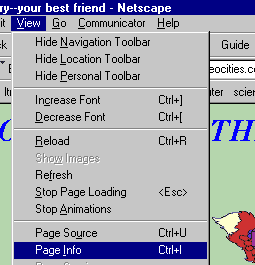CACHE MAGIC

. . . . Ever wonder where the sound comes from when you open a web site? Ever wonder how to lay your hands on it? (or your right mouse button?) How about those "mouse over" images. . . You know the images that change into another when you pass your mouse over them (I'll show you how to create them later). How would you like to "capture" and image that seems to be illusive (not subject to right mouse button capture). Ever wondered what else can a Cache be used for? Here's the answer.
Here's where to find it.
|
This is what your Cache looks like. Yeah, so what! It's just numbers. What is it ?.. ..NEXT 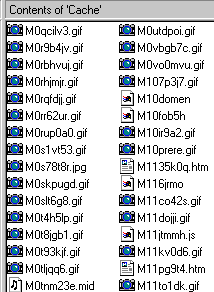 |
Remember the dancing fox in History? . . . It's in the cache! You say, "I don't see any fox there. All I see is numbers!" To find out what those numbers mean to you, from you browser, while viewing History, click "View" and select "page info". . . . .NEXT
|
|
Hey it worked! But what is it? It's the file list for the web page! Including the cache number for the file in the "location" line (I highlighted it). To see the others, click on them in the top window. NEXT
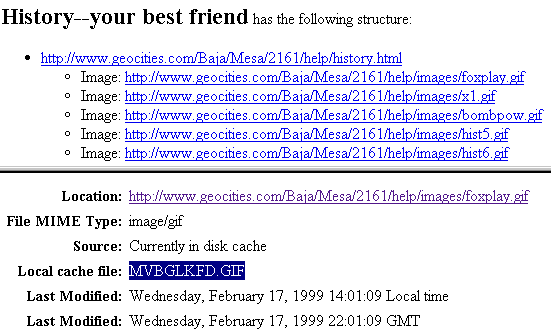
There are 3 ways you can use this information:
First, scroll down and you'll see the image: 
| Second, click on the file name in the lower window and you'll see the image. . . .NEXT |
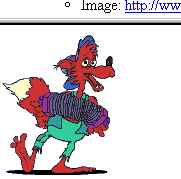 |
|
Third, reduce the window size with a click on middle button |
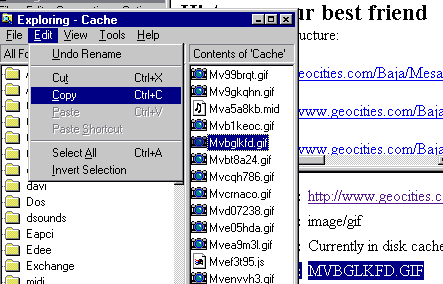 |
Copy the file to any folder and you've got it! Well how about those sounds that play in the background. . . Where are they? Generally in two places (always in cache!) Remember the Chicken Polka? Here it is! You'll find it in cache with that file name (Your cache name will be different! The browser assigns file names (numbers) sequentially). . .NEXT

|
Do the same as described above to locate the "chicken" file in cache and save it. The other place it could be is in your "DOS" subdirectory. Your midi player puts it there. This will make your DOS directory suffer uncontrolled growth |
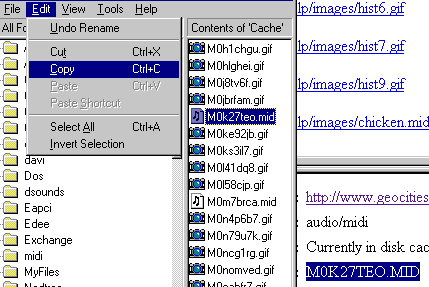 |
